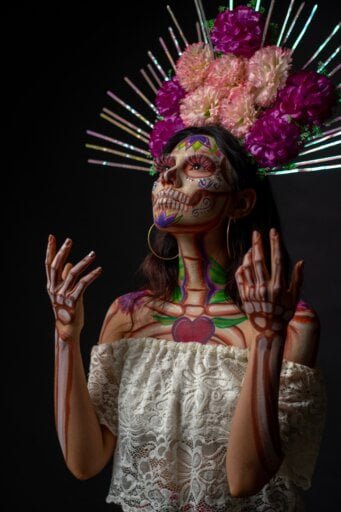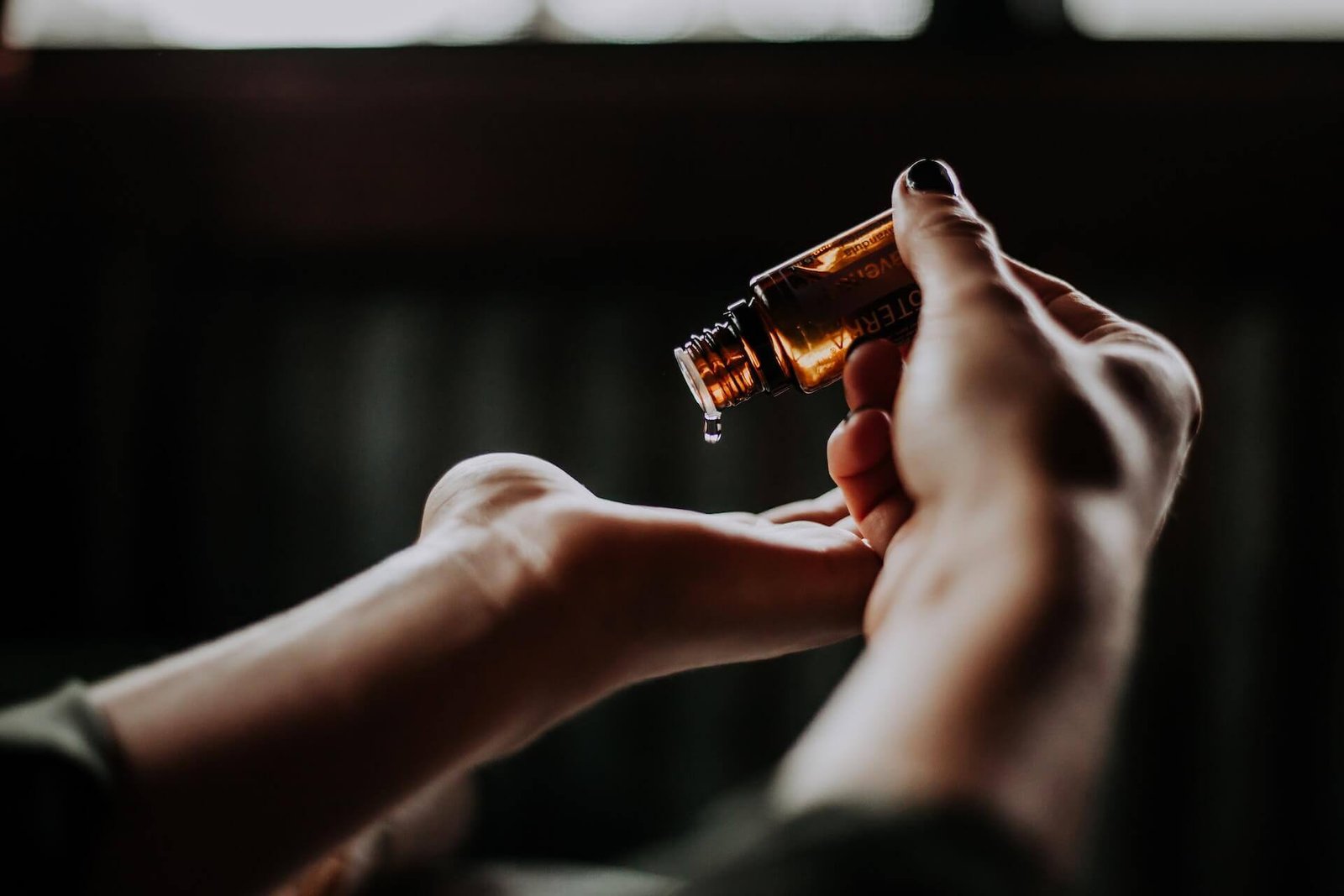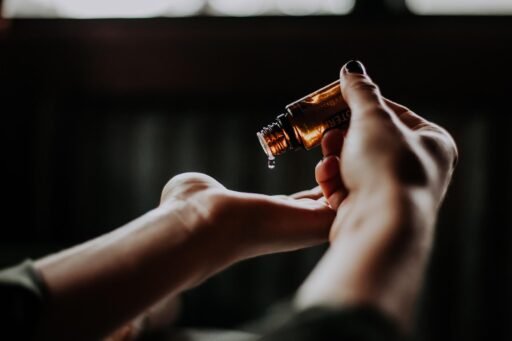Anxiety can be a daunting feeling, but luckily, essential oils have been proven to provide relief. If you’re wondering where to apply essential oils for anxiety, look no further. In this article, we’ll guide you through the most effective areas to target in order to harness the calming power of essential oils. By the end, you’ll be equipped with the knowledge to create your own anxiety-busting routine, leaving you feeling more relaxed and serene.
Where To Apply Essential Oils For Anxiety: Head and Neck
Temples
When it comes to relieving anxiety, applying essential oils to your temples can bring quick and effective results. The temples are located on the sides of your forehead, just above the outer corners of your eyes. Gently massaging a few drops of essential oil onto your temples can provide a soothing sensation and help calm your mind. Some popular essential oils for anxiety relief include lavender, chamomile, and bergamot.
Behind the Ears
Another effective area to apply essential oils for anxiety is behind the ears. This area is particularly sensitive and easily absorbs the therapeutic properties of essential oils. By applying a small amount of oil behind your ears, you can enjoy the benefits of aromatherapy throughout the day. The relaxing scent of essential oils like ylang-ylang or frankincense can help ease tension and promote a sense of calmness.
Neck
Applying essential oils to the back of your neck can provide relief from anxiety and stress. This area is often tense and prone to muscle stiffness, which can contribute to feelings of anxiety. Massaging essential oils onto your neck can help relax the muscles and release built-up tension. Oils such as lavender, clary sage, and vetiver are known for their calming and soothing properties, making them ideal choices for anxiety relief.
Where To Apply Essential Oils For Anxiety: Chest and Abdomen
Chest
The chest is a powerful area to apply essential oils for anxiety relief. By gently massaging oils onto your chest, you can inhale their calming aroma and allow the oils to be absorbed into your body. This can help promote relaxation and reduce feelings of anxiety. Essential oils like bergamot, rose, and geranium are commonly used on the chest to enhance mood and alleviate stress.
Heart Area
The heart area, located in the center of your chest, is closely associated with emotions and can be a great spot to apply essential oils for anxiety. By applying a drop or two of essential oil directly over your heart, you can stimulate feelings of love, compassion, and tranquility. Oils such as rose, jasmine, and neroli are particularly beneficial for uplifting moods and promoting emotional balance.
Abdomen
Anxiety often manifests in the form of a “butterflies in the stomach” sensation. To address this, applying essential oils to your abdomen can offer relief. Massage a few drops of essential oil onto your abdomen using gentle, circular motions. This can help relax the muscles and calm digestive discomfort associated with anxiety. Essential oils such as peppermint, ginger, and chamomile are commonly used for their soothing effects on the abdomen.
Where To Apply Essential Oils For Anxiety: Wrists and Inner Elbows
Wrists
The wrists are easily accessible and an ideal area to apply essential oils for anxiety relief. By applying a small amount of oil to your wrists, you can benefit from the inhalation of the oil’s aroma throughout the day. This can create a sense of calmness and ease anxious thoughts. Oils like lavender, clary sage, and bergamot are often used on the wrists for their calming and mood-lifting properties.
Inner Elbows
Another effective area for applying essential oils is the inner elbows. This area contains a network of blood vessels close to the skin’s surface, allowing for efficient absorption of the oils. Massaging a few drops of essential oil onto the inner elbows can create a soothing effect that helps reduce anxiety. Essential oils such as frankincense, ylang-ylang, and sandalwood are commonly used on the inner elbows for their calming and grounding properties.
Where To Apply Essential Oils For Anxiety: Back and Shoulders
Upper Back
The upper back is a common area where tension and stress accumulate. Applying essential oils to this area can help release tension and promote relaxation. Massaging a few drops of essential oil onto your upper back can provide a soothing sensation and alleviate anxiety-related muscle stiffness. Oils like lavender, eucalyptus, and peppermint are known for their muscle-relaxing properties, making them excellent choices for the upper back.
Shoulders
The shoulders are another key area to target when applying essential oils for anxiety relief. Often carrying much of our stress and tension, the shoulders can greatly benefit from the calming effects of essential oils. Massaging a few drops onto your shoulders can help ease muscle tension and promote a sense of peace. Essential oils such as chamomile, rosemary, and clary sage are commonly used on the shoulders for their relaxing and tension-reducing properties.

Where To Apply Essential Oils For Anxiety: Feet and Ankles
Feet
The feet are a highly effective area for applying essential oils for anxiety relief. Due to their large number of sensory receptors, the feet can efficiently absorb essential oil molecules, allowing for their therapeutic effects to be quickly experienced. Massaging essential oils onto the soles of your feet can help promote relaxation and reduce anxiety. Oils like lavender, bergamot, and patchouli are typically used for their calming and grounding properties when applied to the feet.
Ankles
Just above the feet, the ankles are another ideal spot for applying essential oils to relieve anxiety. Similar to the feet, the skin in this area is thin, making it highly receptive to the benefits of essential oils. Massage a few drops of oil onto your ankles to create a sense of grounding and stability. Essential oils such as sandalwood, vetiver, and cedarwood are commonly used on the ankles for their soothing and calming properties.
Where To Apply Essential Oils For Anxiety: Palms and Soles
Palms
The palms of your hands are another effective area to apply essential oils for anxiety relief. By rubbing a few drops of oil onto your palms, you can enjoy the calming scent throughout the day. Cup your hands and take deep breaths, allowing the aroma to envelop you and create a sense of tranquility. Oils such as lavender, clary sage, and ylang-ylang are commonly used on the palms for their relaxation-inducing properties.
Soles
Similar to the palms, the soles of your feet are rich with sensory receptors, making them an excellent area for applying essential oils for anxiety relief. By massaging a few drops of oil onto the soles, you can experience the therapeutic effects of the oils while grounding yourself. Essential oils like lavender, chamomile, and frankincense are often used on the soles for their calming and balancing properties.

Crown of the Head
Top of the Head
The crown of the head, or the top of the head, is a less commonly known area to apply essential oils for anxiety relief. However, it can be an effective spot for promoting a sense of calmness and mental clarity. Gently massage a few drops of essential oil into your scalp, focusing on the top of your head. This can help alleviate tension and promote relaxation. Oils such as lavender, rosemary, and peppermint are often used on the crown of the head for their refreshing and calming properties.
Where To Apply Essential Oils For Anxiety: Pulse Points
Wrist Pulse Points
Pulse points, where blood vessels are close to the surface of the skin, are excellent areas to apply essential oils for anxiety relief. One common pulse point is located on the inner wrist, just below the base of the thumb. Applying essential oil to this area allows the oil to interact with your natural body heat and pulse, which can enhance the diffusion of the oil’s aroma. Oils like jasmine, bergamot, and clary sage are often used on the wrist pulse points for their uplifting and anxiety-reducing properties.
Neck Pulse Points
Another important pulse point for anxiety relief is located on the neck, just below the earlobe. This area contains major blood vessels that can efficiently absorb essential oils. Applying a drop or two of oil to the neck pulse point can help promote relaxation and reduce anxiety. Oils such as lavender, chamomile, and bergamot can be used on the neck pulse points for their calming and mood-enhancing effects.
Temples
The temples, mentioned earlier, are also a significant pulse point where essential oils can be applied for anxiety relief. The temples are located on the sides of the forehead, just above the outer corners of the eyes. Massaging essential oil onto the temples can help ease tension and promote relaxation. Oils such as lavender, chamomile, and bergamot are often used on the temples’ pulse points for their calming and soothing properties.
Where To Apply Essential Oils For Anxiety: Bath
Warm Bath
Taking a warm bath infused with essential oils can be a luxurious and effective way to alleviate anxiety. As you soak in the warm water, the essential oils disperse through the steam and are inhaled, providing a calming and therapeutic experience. Add a few drops of your chosen essential oils, such as lavender, ylang-ylang, or clary sage, to your bathwater and indulge in deep relaxation. The warm water itself can help relax your muscles and promote a sense of tranquility.
Foot Soak
A foot soak is a targeted and convenient method of using essential oils for anxiety relief. Our feet contain numerous reflexology points that can stimulate relaxation throughout the body. Fill a basin or tub with warm water and add a few drops of essential oils known for their calming properties, such as lavender, chamomile, or bergamot. Soak your feet for 10-15 minutes, allowing the oils to penetrate the skin and provide relief from anxiety. This method is particularly beneficial after a long and tiring day.
Where To Apply Essential Oils For Anxiety: Inhalation
Diffuser
Using a diffuser to inhale essential oils is a popular and effective way to relieve anxiety. A diffuser disperses the oils into the air, allowing you to inhale their aromatic molecules and experience their therapeutic benefits. Simply add a few drops of your chosen essential oils, such as lavender, clary sage, or frankincense, to the water reservoir of your diffuser and turn it on. The subtle scent will fill the room, creating a peaceful and calming environment. This method is particularly useful for promoting relaxation before bedtime.
Tissue
Inhaling essential oils using a tissue is a portable and convenient method for anxiety relief on the go. Place a few drops of your selected essential oil onto a tissue or handkerchief and hold it close to your nose. Take slow, deep breaths, allowing the aroma to enter your lungs and calm your mind. This technique can be used whenever you feel overwhelmed or anxious, providing an instant sense of tranquility. Essential oils like lavender, chamomile, and bergamot are particularly beneficial when used with this method.
Inhaler
Essential oil inhalers are small devices that allow you to inhale concentrated essential oils directly. These inhalers are compact and easily carried in your pocket or purse, making them perfect for quick anxiety relief whenever you need it. To use an inhaler, simply open the cap and take a few deep breaths, inhaling the aroma. Oils such as lavender, frankincense, and clary sage can be used in inhalers for their calming and anxiety-reducing effects. This method provides a discreet and personal way to find calmness in any situation.
In Conclusion: Where To Apply Essential Oils For Anxiety
By knowing where to apply essential oils for anxiety relief, you can effectively harness their soothing and calming properties. Experiment with different oils and application methods to find what works best for you. Whether it’s massaging oils on your temples, using a diffuser, or enjoying a relaxing bath, incorporating essential oils into your routine can contribute to a healthier and more balanced state of mind. Remember to always dilute essential oils properly and consult with a healthcare professional for any specific concerns or conditions. Embrace the power of aromatherapy and let the calming scents guide you towards a more tranquil and anxiety-free life.
Frequently Asked Questions:
- Where should I put essential oils for anxiety? Apply essential oils on pulse points like wrists, temples, and neck. Consider diffusing or inhaling for a more immersive experience.
- Where do you apply relaxing essential oils? Focus on areas with high blood flow, such as wrists, chest, and the back of your neck, to enhance the calming effects of relaxing essential oils.
- What is the number one essential oil for anxiety? Lavender is often considered a top choice for anxiety relief due to its calming properties and pleasant aroma.
- How effective are essential oils for anxiety? While individual responses vary, many people find essential oils effective for managing anxiety symptoms. They can be a valuable part of a holistic approach.
- What oil calms anxiety? Lavender, chamomile, and frankincense are known for their calming properties. Experiment to find the oil that works best for you.
- Where do you rub lavender oil for anxiety? Apply lavender oil on pulse points like wrists, behind ears, or on the temples for anxiety relief.
- Does it matter where you apply essential oils? Yes, application matters. Applying to pulse points allows the oils to be absorbed more effectively, enhancing their therapeutic benefits.
- Why put essential oils behind ears? Applying behind the ears targets pulse points, facilitating absorption and allowing the aroma to reach the olfactory system for a soothing effect.
- What essential oil helps with overthinking? Frankincense and bergamot are often recommended for overthinking. Inhale or apply these oils to experience their calming influence.
- How to treat panic attacks with essential oils? Inhale calming oils like lavender or chamomile during a panic attack. Incorporate deep breathing for a synergistic effect.
- How to use essential oils for anxiety and sleep? Diffuse calming oils like lavender in your bedroom before sleep. Apply a diluted blend on your wrists or pillow for a restful night.
- How to get rid of anxiety fast? Practice deep breathing, use calming essential oils, engage in mindfulness, and consider professional support for effective anxiety management.
- How fast does lavender oil work for anxiety? Results vary, but many report feeling calmer shortly after inhaling or applying lavender oil.
- How to apply essential oils? Apply essential oils by diluting them with a carrier oil and gently massaging onto desired areas, or use a diffuser for inhalation.
- How to calm anxiety? Practice deep breathing, mindfulness, and use calming strategies such as essential oils. Seek professional help for personalized support.
- Do essential oils expire? Yes, essential oils can expire. Check the expiration date, and store them properly in a cool, dark place.
- Do bananas help anxiety? Bananas contain nutrients that support serotonin production, contributing to mood regulation and potentially helping with anxiety.
- How to use peppermint oil for anxiety? Inhale or diffuse peppermint oil for its invigorating properties. Alternatively, apply a diluted solution to pulse points.
- Is lavender as effective as Xanax? While lavender oil can provide calming effects, it’s not a substitute for prescription medications like Xanax. Consult a healthcare professional for advice.
- Can magnesium help reduce anxiety? Magnesium plays a role in anxiety regulation. Consult with a healthcare provider to determine if magnesium supplements are suitable for you.
- Where is the best place to put lavender essential oil? Apply lavender oil on pulse points like wrists, temples, or the back of your neck for maximum benefits.
- When should you not use essential oils? Avoid using essential oils if you have sensitivities, allergies, or certain medical conditions. Pregnant women and children should use caution.
- How not to use essential oils? Avoid applying undiluted essential oils directly to the skin. Use a carrier oil, and follow recommended guidelines for safe use.
- Can you apply too much essential oils? Excessive application may lead to skin irritation. Follow recommended dilution ratios, and use essential oils in moderation.
- Why put essential oil on wrist? Applying essential oils to the wrists targets pulse points, facilitating absorption and allowing the aroma to be easily inhaled.
- What is the disadvantage of putting oil in your ear? Putting oil in your ear can lead to earwax buildup, infection, or damage to the ear canal. Consult with a healthcare professional before attempting.
- Is it OK to put essential oils directly on the skin? While some oils can be applied directly, it’s generally safer to dilute them with a carrier oil to prevent skin irritation.
Source: Essential Oils

